We use RAID technology to help keep data safe on different servers using methods like parity, mirroring, or data striping with various RAID levels. But if RAID fails, what happens? This article discusses the risks of a failing RAID, why it might fail, how to prevent data loss, and how we recover lost data.

About RAID
Let’s begin by understanding RAID technology before going into RAID failures. RAID is a storage system that is commonly used in NAS and SAN servers. It works by combining multiple hard drives to create a storage group. These hard drives coordinate and work together based on their configurations and methods of keeping data safe, such as redundancy, parity, and mirroring.
Different RAID setups, like RAID 0 (striping without redundancy), RAID 1 (mirroring for duplication), RAID 5 (striping with parity for fault tolerance), RAID 6 (striping with double parity for added fault tolerance), and RAID 10 (a combination of mirroring and striping), provide different levels of safety.
What happens if RAID fails?
When our RAID (Redundant Array of Independent Disks) configuration fails, it means that one or more of the disks in the array have failed, and the redundancy mechanisms built into the RAID setup cannot overcome the failure.
The consequences of a RAID failure depend on our use of a particular RAID level and the nature of the failure. Here are some common scenarios:
RAID 0: RAID 0 does not provide any fault tolerance. If one drive fails, all data is lost.
RAID 1: Data is duplicated on each drive. If multiple drives fail, then all data is lost.
RAID 5: In this configuration, data is stored at block level with distributed parity across multiple drives. If multiple drives fail, then all data is lost.
RAID 6: Similar to RAID 5, but with two sets of parity information. Can tolerate the failure of two drives without data loss.
RAID 10: A combination of RAID 1 and RAID 0: data is mirrored and then striped. Can tolerate the failure of one drive in each mirrored pair without data loss.
The Major Cause of RAID Failure
There are many reasons for RAID failure some of the most common of them are:
Controller Failure: If your RAID controller malfunctions, it may lead to the failure of the entire RAID array.
Power Surges or Outages: Sudden power disruptions can cause data corruption or damage to the RAID configuration.
Firmware or Software Issues: Bugs or glitches in the RAID controller’s firmware or software can be the reason for failures.
Hasty Work: Accidental deletion of data, improper configuration changes, or mistakes during maintenance can lead to RAID issues.
Multiple Drive Failures: Depending on the RAID level, the failure of multiple drives, especially in close succession, can result in data loss.
RAID Rebuild Issues: During the rebuilding process after a drive failure, if another drive fails or an incompatible hard disk is used, it can result in data loss.
Preventive Mesures to Minimize Data Loss
We can prevent or reduce the chances of data loss in RAID failures by taking the following active measures:
Replace a failed drive as soon as possible
Regularly back up your data to an external hard drive or separate system.
Use a UPS to protect your system from sudden power outages.
Keep your RAID controller firmware and software up to date.
Ensure proper ventilation and temperature control for your hardware.
Periodically test your RAID array’s functionality.
What should I do when RAID fails?
When our RAID fails, it is important to identify and replace the faulty drive as soon as possible. Then RAID controllers will start rebuilding once a new drive is installed. During the rebuilding process, the data from the remaining drives is used to recreate the lost or damaged data on our new drive.
It’s important to regularly monitor the health of RAID arrays and replace failed drives to minimize the risk of data loss. Additionally, having proper backups is always recommended, as RAID is not a substitute for a comprehensive backup strategy.
How to Recover Data If Data Loss in RAID
To recover data from RAID failure, we can follow the steps written below:
Step1. Search for the Reason for Data Loss
In a RAID setup, the loss of data can happen due to various reasons, ranging from malware attacks to physical damage. It is important to identify the root cause of data loss in your RAID configuration – whether it is a software issue or a physical issue.
Step 2. Use Backup to Restore Data
If you have a backup of the lost data on those specific drives that failed, you can rebuild a new array and retrieve that data to recover it quickly. External backups of important files or data always help in critical moments.
Step 3. Take Help From Professionals
If you are experiencing data loss due to RAID failure and do not have backups of your lost files, you need a trustworthy and professional solution. Techchef Data Recovery is a trusted provider with a team of skilled technicians and advanced tools and technology.
Final Words
RAID technology provides multiple advantages but is not immune to failure. Keeping proper maintenance and having a backup of important files can protect us from data loss. But if your RAID level has failed, don’t hesitate to contact Techchef Data Recovery. We have been providing data recovery services for more than 20 years and have recovered data successfully and securely from all types of RAID configurations.
Call 1800-313-1737 to book a slot for data recovery and get consulting from our experts.



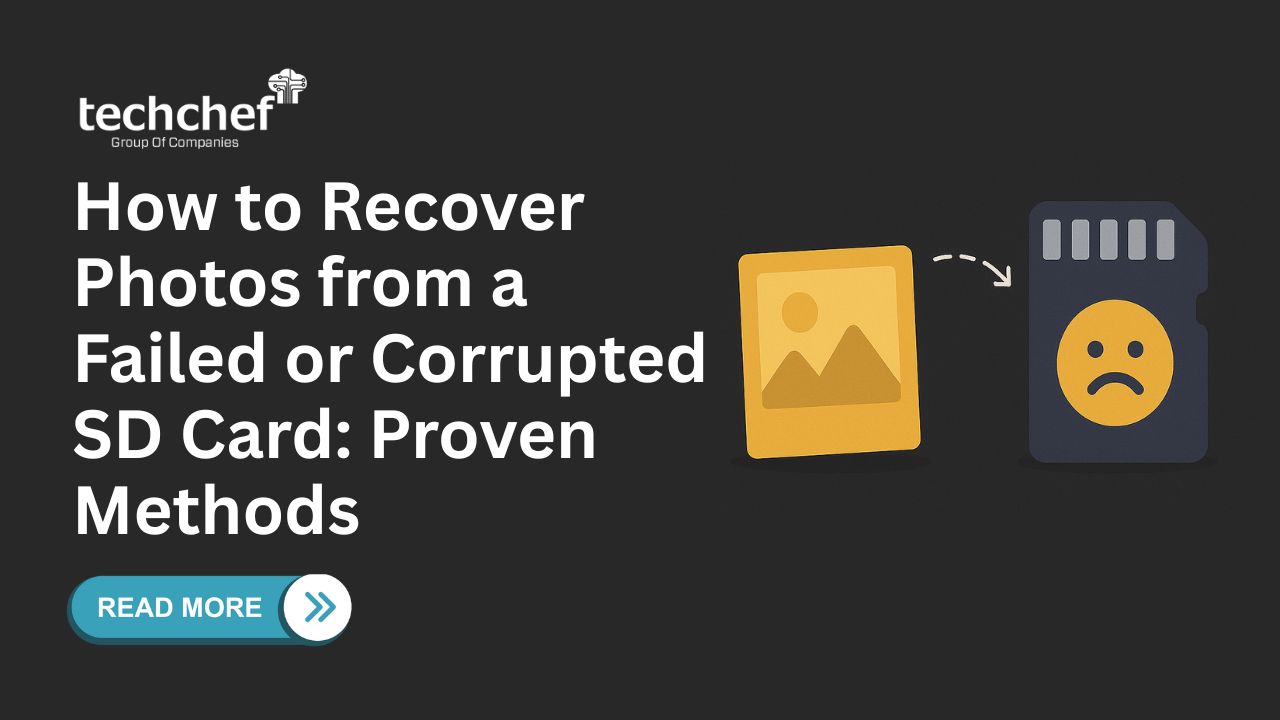
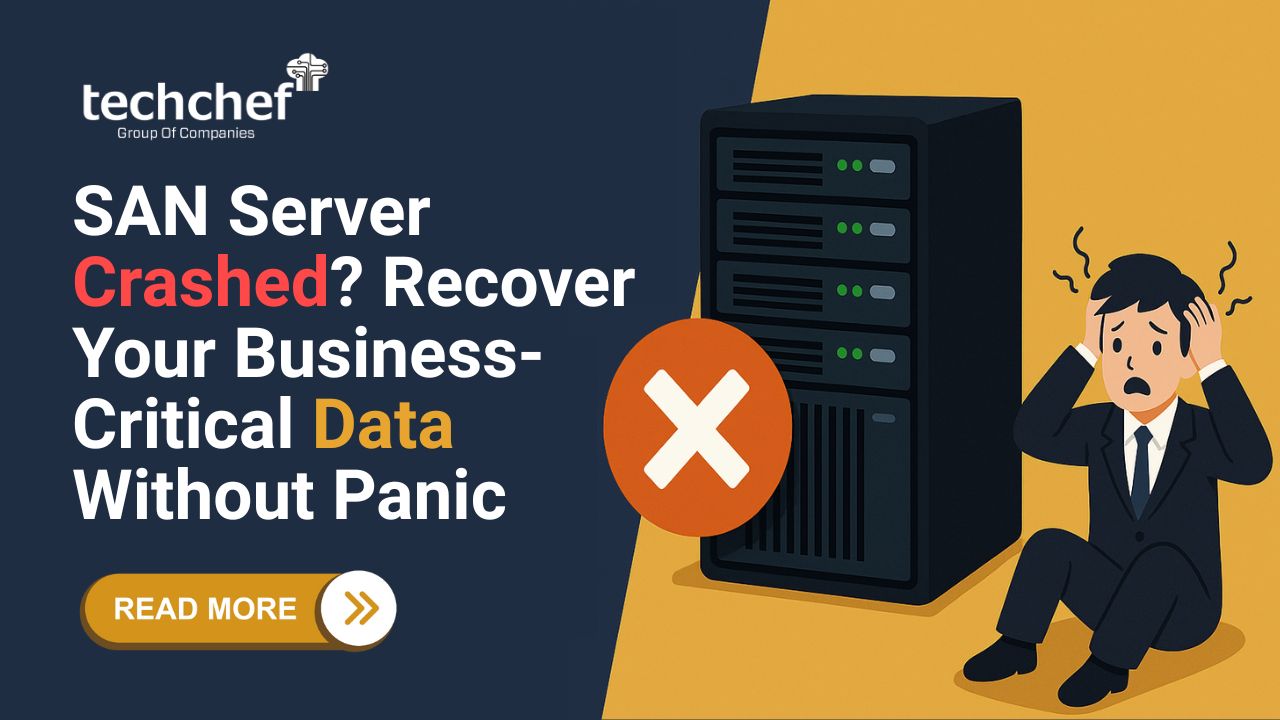
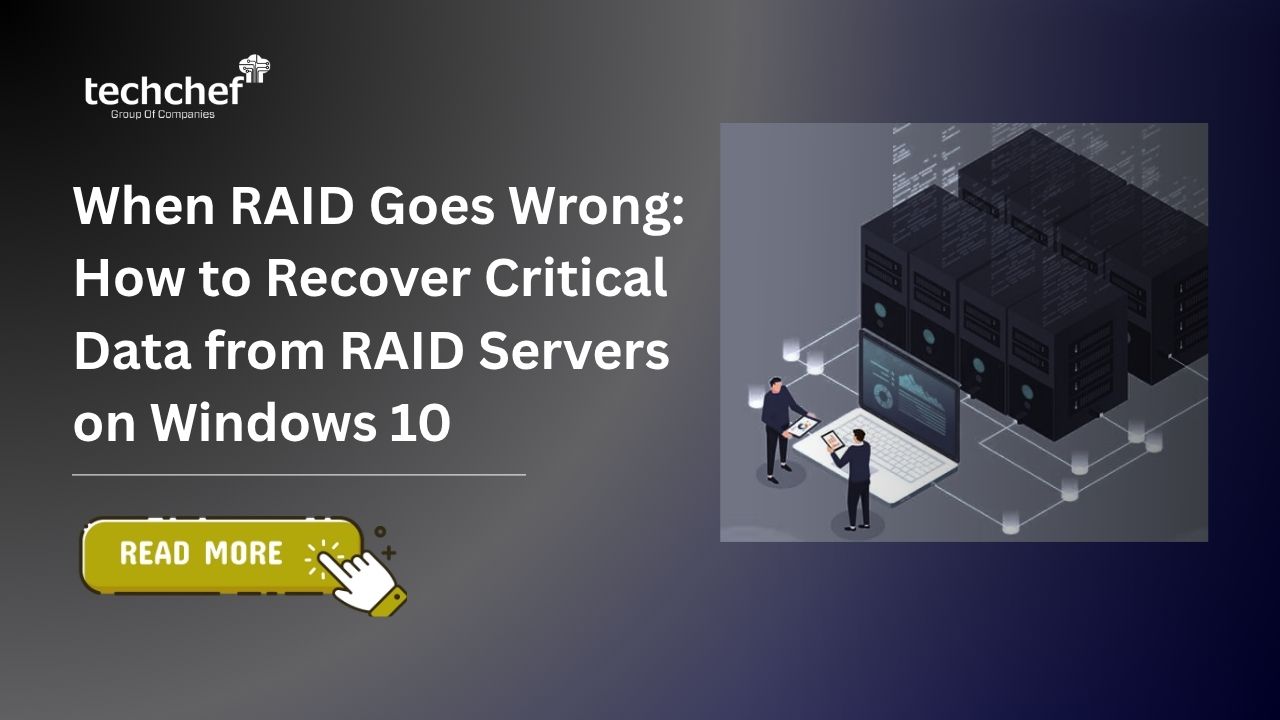
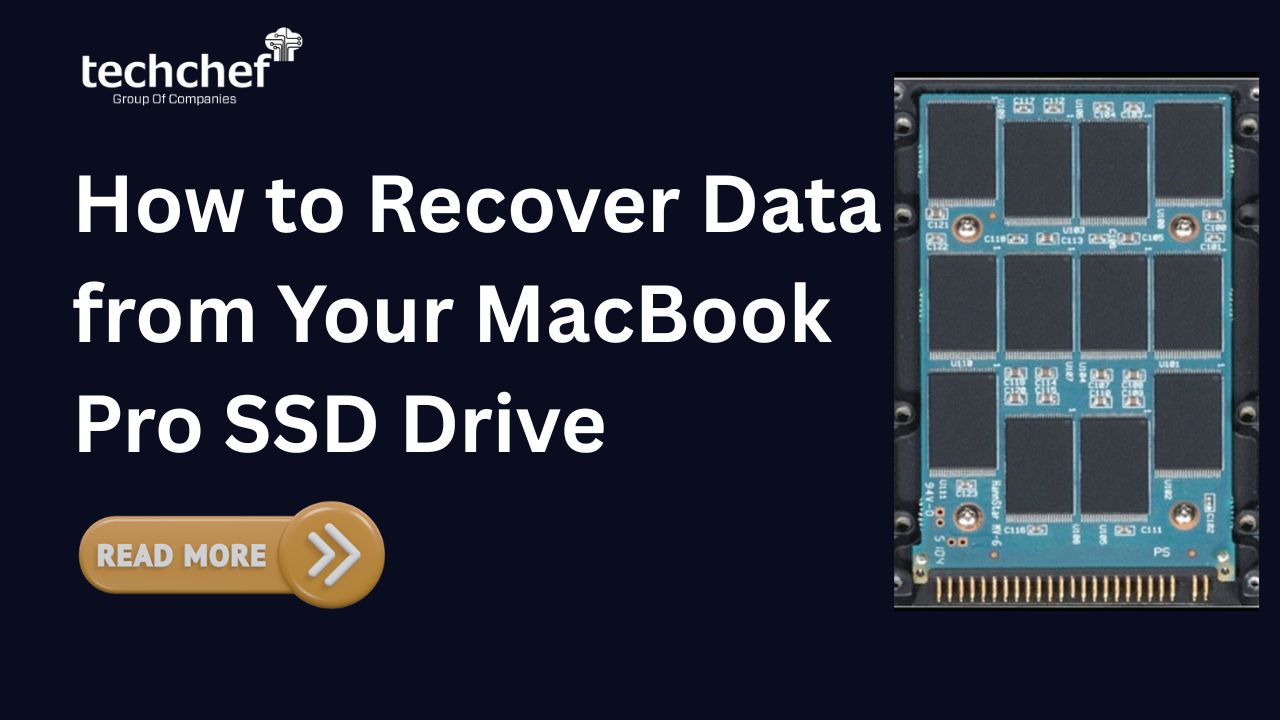
 How to Recover Data from Your MacBook Pro SSD Drive
How to Recover Data from Your MacBook Pro SSD Drive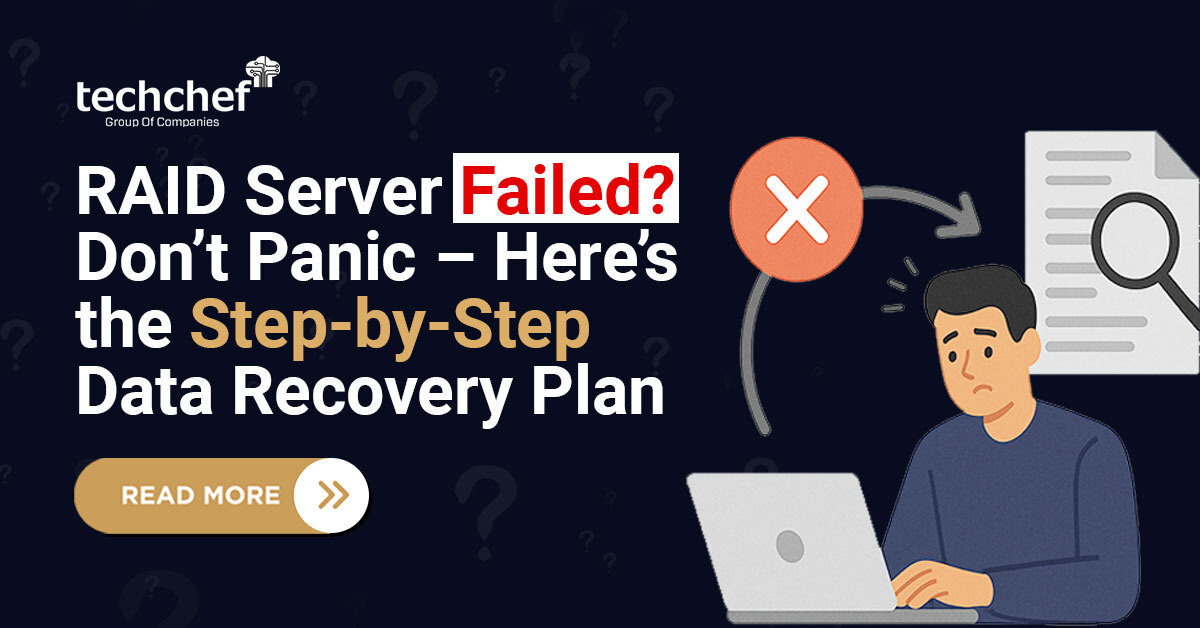
 RAID Server Failed? Don’t Panic – Here’s the Step-by-Step Data Recovery Plan
RAID Server Failed? Don’t Panic – Here’s the Step-by-Step Data Recovery Plan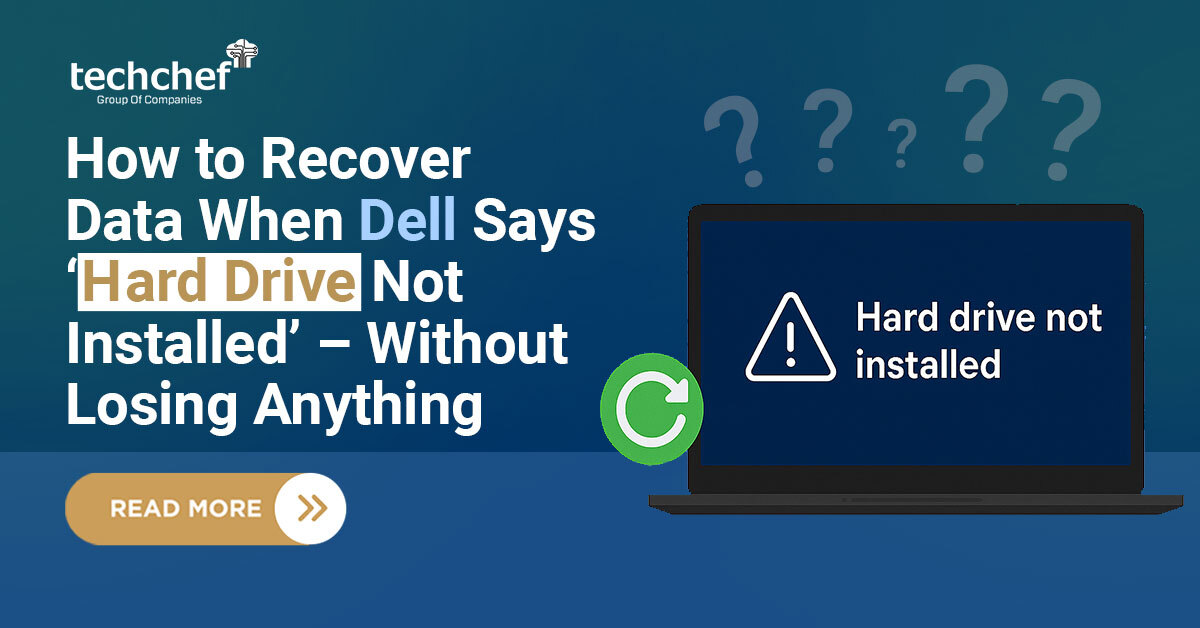
 How to Recover Data When Dell Says ‘Hard Drive Not Installed’ – Without Losing Anything
How to Recover Data When Dell Says ‘Hard Drive Not Installed’ – Without Losing Anything
